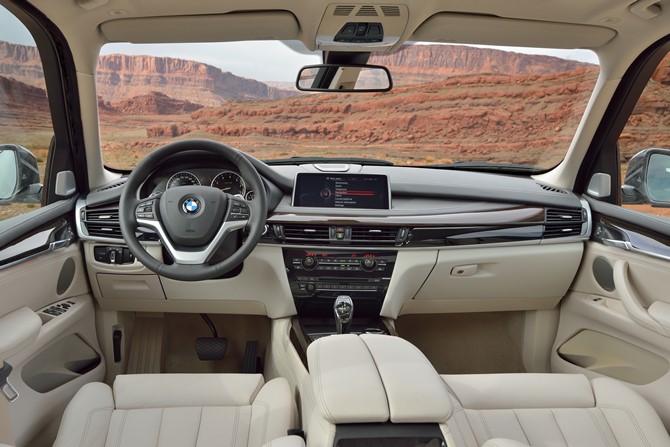All-new BMW X5 breaks cover
BMW first dabbled into the Sports Utility … ok, fine … Sports Activity Vehicle market segment in 1999 with the original BMW X5. Other X sports activity models such as the X1, X3, and X6 have since been added to the range, and they will soon be joined by the all-new X4.
The second generation E70 X5, launched in 2006 then facelifted in 2010, is due for its full model change this year, and it will be replaced this year by the third generation X5, code-named F15 in Munich’s internal communications.
Rolling out from BMW’s Spartanburg plant in South Carolina, USA, the all-new X5 is scheduled for a November 2013 market launch in Germany, where it will debut with three variants – a petrol V8 flanked by two six-cylinder diesels, all engines turbocharged and compliant to Euro 6 emission standards.
The sole petrol variant for now is the X5 xDrive50i, powered by a twin-turbocharged 4.4-litre V8 developing 450hp and 650Nm, gains of 43hp and 50Nm from its equivalent predecessor achieved despite a 2.0 l/100km reduction in official fuel consumption to record 10.5 l/100km in official EU test cycles. CO2 emissions are down 50 grams per kilometre, at 244 g/km.
BMW attributes the improved figures of the petrol V8 engine to the inclusion of its Valvetronic variable valve timing system, which was previously unavailable in the N63 V8 engine. Electronically limited to a top speed of 250kph, the X5 xDrive50i completes the century sprint at five seconds flat, half a second faster than the previous equivalent model.
The two diesel variants meanwhile, feature BMW’s legendary inline six-cylinder configuration, and both displace three litres. Where they differ is in the number of turbos used to boost their outputs. The single variable geometry turbo xDrive30d produces 258hp and 560Nm to enable a highly-respectable century sprint time of 6.9 seconds whilst sipping only 6.2 l/100km (CO2 – 164 g/km) in the test cycles. Meaner alternative is the M50d variant, boosted by three turbochargers to wring out 381hp and 740Nm. Vital statistics for this model read 5.3 seconds from 0 to 100kph, 6.7 l/100km fuel consumption, and 177 g/km of carbon dioxide from the tailpipe.
Additional variants will join the line-up in December 2013, and they will feature the first ever use of a four-cylinder engine in an X5 and also the first ever rear-wheel driven X5. The highly-acclaimed 2.0-litre N47 turbodiesel engine makes its first ever appearance in an X5 and it will be the only powertrain offered with the option of RWD or AWD in the sDrive25d and xDrive25d variants respectively.
Joining the 218hp 25d variants in making late arrivals will be the 3.0-litre straight-six petrol xDrive35i producing 306hp from its award-winning N55 twin-scroll turbo engine and yet another 3.0-litre diesel variant, which is the xDrive40d with 313hp on tap.
All variants of the BMW X5 are equipped with 8-speed automatic transmissions as standard, with a further option of specifying a more aggressive sports automatic transmission upgrade. Vehicles fitted with the sports automatic transmission come further equipped with a ‘launch control’ function which you can put to good use by showing the noisy Evo or WRX who’s daddy at the traffic light.
Alternatively, if sustainable motoring is your thing, the X5’s range driving profiles, accessed through the Driving Experience Control switch, also includes Eco Pro mode as standard. Compared to existing BMW models, the X5’s Eco Pro mode includes new features such as the coasting function and in vehicles equipped with the optional Navigation System Professional, the Proactive Driving Assistant will advise the driver on when best to ease off the accelerator in order to maximize fuel savings.
Along with the additional Eco Pro mode functions, the new BMW X5 also comes with many other BMW EfficientDynamics features. These include Brake Energy Regeneration, the Auto Start Stop function, on-demand operation of ancillary units, Electric Power Steering, low roll-resistance tyres and a variety of weight- and drag-reducing features.
BMW also stepped up the use of advanced materials such as ultra high tensile steel, thermoplastics, aluminium, and magnesium to help shed precious kilos off the new X5. BMW claims that depending on model, a unit of the new BMW X5 can weigh as much as 90kg lighter than a comparably equipped unit of a corresponding model from the previous model generation.
KON


























